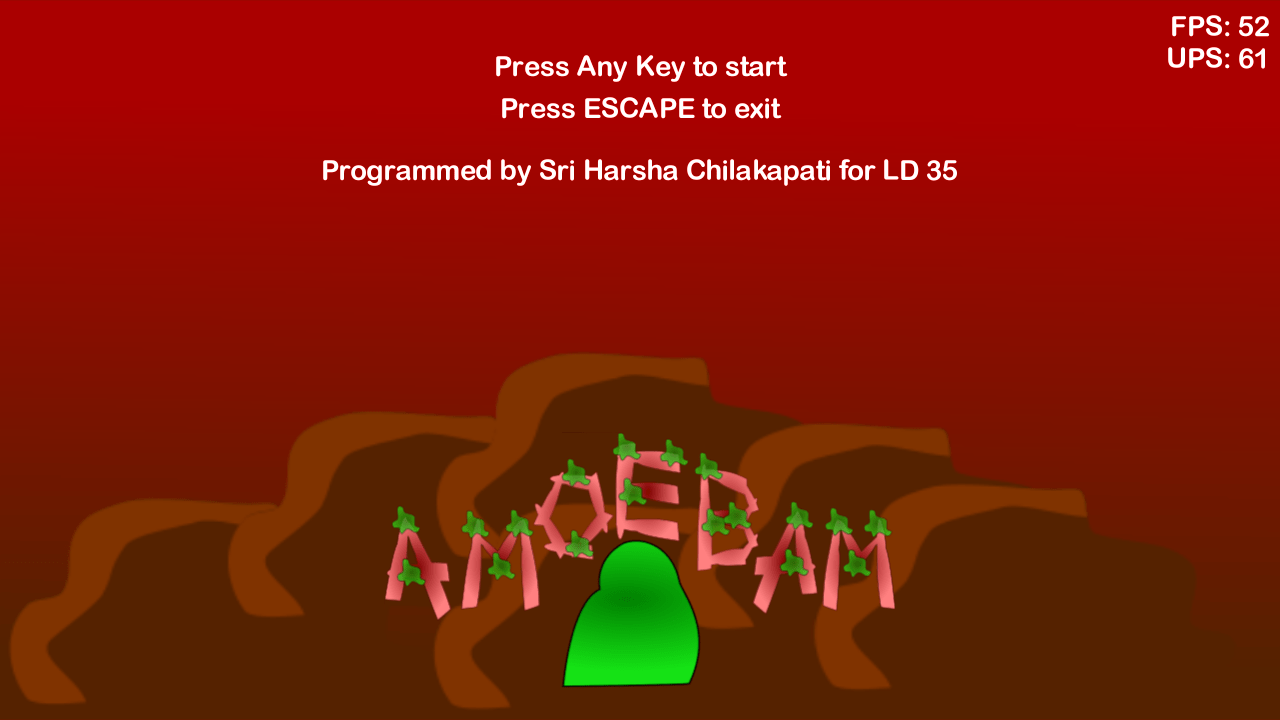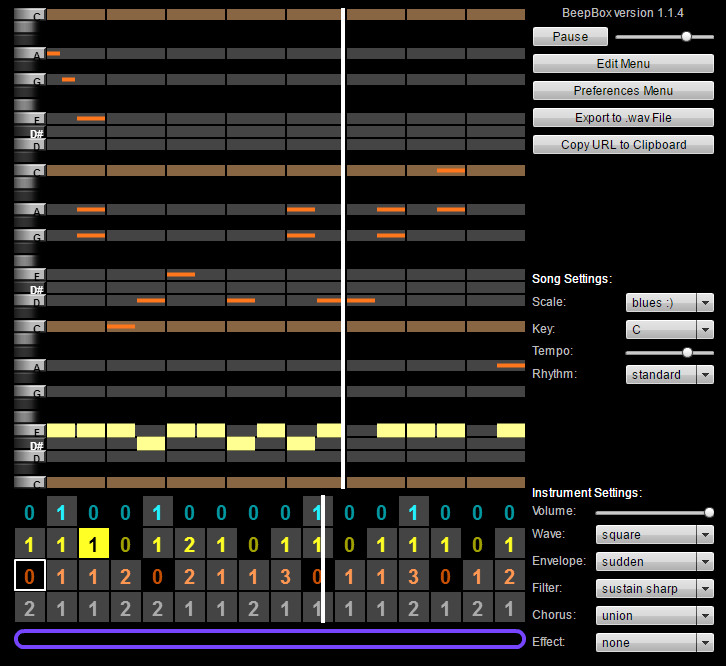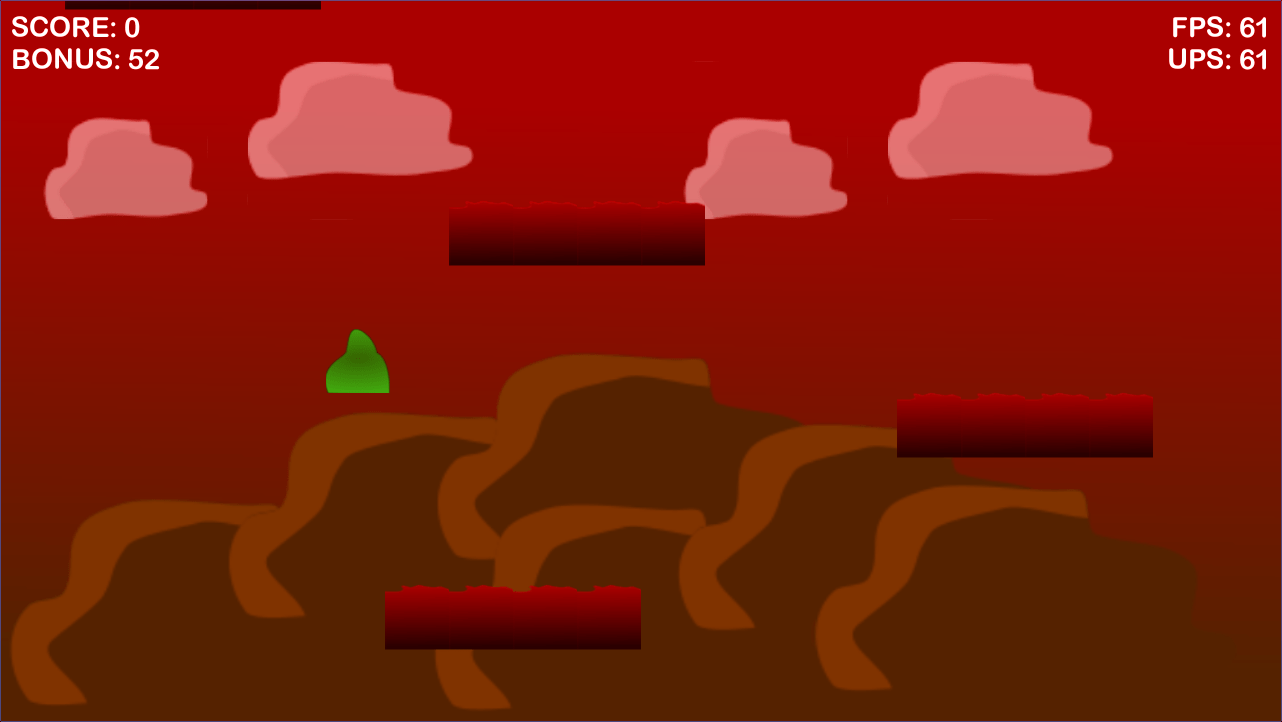If you haven’t heard of the Ludum Dare before, it is the world’s largest game jam, intended for game developers where you have to make a game according to a given theme within 48 hours. I’ve been participating in since Ludum Dare 31, and I’ve decided to participate again this time. This time, I wanted to try a new platform as well, that is HTML 5, and be productive with my engine too.

Two months ago
I have started planning to learn HTML 5. I already knew some basics, which I learned along with WebGL when I wrote a Java binding of WebGL with the help of Google web toolkit. However the road block that I got into was sound.
I took a few weeks to study the web audio API and the OpenAL specification, and came to understand that the two APIs are very similar in design. I quickly wrote Java bindings for web audio API. But using two different APIs at once is time consuming, so I wrote an implementation of OpenAL according to the specification which delegated the calls to the web audio API which rendered the sound.
One month ago
Except for the Ludum Dare 31, I have been using my own game engine for LD games, and I wanted to continue using it. However since I had written my engine with synchronous IO from the start, I had to rewrite it using asynchronous IO to support the HTML5 backend.
I also decided to rewrite the graphics, audio and also collisions etc., So I made a jump right in, and started developing in a new branch. I was able to plug in WebGL4J and GWT-AL for graphics and audio in the HTML5 backend, and LWJGL for desktop backends.
I quickly started writing interfaces in the engine project, and writing their implementations in the backend projects. I was able to get the basic tests up and running, with input support for keyboard, mouse and touch. Unfortunately the graphics and audio were incomplete, so I decided to use raw OpenAL and OpenGL for this JAM.
Two days ago
I thought I should make a warmup this time, so I started to make a multi project build using gradle build system so that I can build to both desktop and HTML5 with a single code base. It was a bit hard to configure actually, so I thought it might consume a lot of time that is costly during the compo, so I quickly wrote a project generator that can be used to generate project files on run do that time can be saved.

One thing to be noted, I always wanted to learn the JavaFX for writing user interfaces, and I learned it this time in just an hour to write the project generator. I felt it was really easy when compared with the traditional Swing and AWT GUIs. I wrote as many tests as I can for the engine, and started waiting for the compo to start.
On the first day
The compo starts at 6:30 AM in my locality on Saturday, and I was awake by 5:00 AM on that day, waiting for the theme to be announced. It was very hyped and the site went down for me. I got to know the theme from the IRC and it is something that I had voted down!! It is shape shift. I must say it confused me a lot. I immediately went for a shower, and got to think about the theme.
Change in the shape.. hmm.. what is an object that changes shape? I thought in the shower and something else struck my mind.
If the object has no shape like water, it will occupy the shape of the container.
But making a game about water is bit easy since I need to implement multiple containers for shifting shapes. The alternative that came to my mind was Amoeba. I immediately fired up Inkscape and made the assets, it took about two hours of the time. I made the sprite sheet for the character, the background and the clouds.

By the afternoon, I have done the basic assets, and done the resource loading. Fortunately it worked in but l both HTML5 and desktop backends. I quickly turned the sprite sheets into animation objects and with a custom SpriteRenderComponent I was able to draw them. However the frame rate was too low, so I quickly coded by custom batch, which is the reason the game performed too bad in WebGL build, I used CPU to transform each and every vertex.
I also got the basic tile map defined in text files to load and render that day. I added entities, and coded the basic platformer movement, and buggy jump code. It was 2:00 in the night, and I went to sleep.
The second day
The second day being the Sunday, and I had pretty much lack of sleep, I woke up at 10:00 in the morning, and had 8 hours of uninterrupted sleep. I immediately took a shower and took some breakfast. I skipped coffee, and started to code by 11:00 AM.
The art is okay, but what about music?
I have composed a track before going to sleep the previous day, but it didn’t play well according to the theme. I have composed another track from scratch while having breakfast and got that into the game. I decided to get other sound effects later if I had any time left.

I had refactored the tile map data into level objects which manipulated the scene and created entities by parsing a text file. I just made one level, and fixed some bugs in movement. By noon, I have the first level completely done. I had my lunch in half an hour, and sat down again to code.
Hehe hhehe he.. Movie!!!
I got very bored after I made a cut scene mechanism and I switched over to watch a movie. Three hours passed away, and I came back to my computer. I took the coffee this time and started programming again. I have modified the shooting animation and changed the bullet sprite.

I have only one evening left, and I decided to do the levels before dinner. I have made 6 levels and 10 cutscenes to make up a story and tutorial for the player. This rush explains why you will feel that the levels are too hard. I had dinner and then added 4 more levels. Finally I added sound effects for shoot and explosion.

The rolling animation is done in the end, before I did the last few levels. I had found some more bugs here, causing the entity to go inside the ground when rolling, so I had to prevent the rotation from affecting the collision component, written in a separate component. It’s already night, and I need to be fast.
Wait, my game is not playing!!
I started to deploy to my site (using GitHub pages) and the game didn’t load!! It was a quick fix, I had typed POST instead of GET and the server is reporting with error 405. To my surprise this didn’t happen in the development server.
I also noticed another bug in the desktop build, that the wav file loader is skipping some frames from loading, so I chose to deploy OGG format this time. I also fixed a crash in HTML5 build that forgot to create an OpenAL context.
Submitting the game
It’s finally 1:00 in the night and I finally submitted my entry. I immediately fell asleep after becoming too tired. The next morning I took the screenshots of the development and made a short time lapse. Here you can watch it:
So I was able to make a game in 48 hours, and with a theme that I never understood clearly. We learn something every time we take up challenges like this, and I did learn a lot, Entity Component Systems (ECS) architecture, JavaFX GUIs, WebGL, Web Audio API, JS Fullscreen API, and also a bit on optimizations. This also taught me Ajax (for loading assets in HTML5 build), and a lot of other stuff.
You can play the game online here and please give a rating on the Ludum Dare entry page here.
